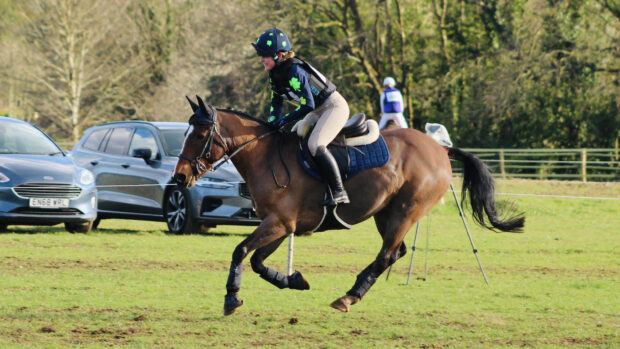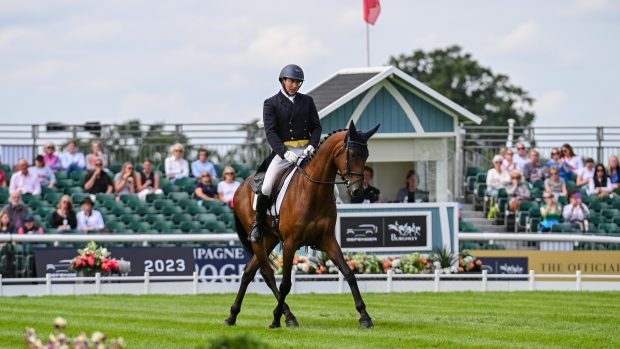Treatment or surgery for kissing spines – and other conditions – is the start of a long-term process rather than the end, riders have been reminded.
The discovery of impinging or overlapping spinous processes does not preclude a successful ridden career in many cases – but affected horses must be carefully managed, both in the short- and long-term.
Samantha Dudley, who retrains former racehorses, told H&H that “probably 70%” of those who come to her have kissing spines to some degree, and that in the past 10 of her 30 years in the job, there has been a “massive increase” in the number affected.
“I see people who get ex-racers, and other horses, with kissing spines and the education about what you should do after [treatment] is really bad,” she said. “People think they can have the surgery and that’s it, the horse is fixed. But it’s not, it’s a lifetime commitment.”
Ms Dudley gave the example of one horse who has been with her for nine months, and “we’re just starting to see we might have a [ridden] horse here”.
“But we’re still on walk work, and we’re on month nine,” she said. “We’re doing straight lines, making sure his core muscles are being used. But I think there are a lot of people who don’t understand what a good programme is. Every horse is different but I’d think many of them, two to three years after the operation, will be bad again, because the rehab hasn’t been kept going. The surgery is day one.”
Some horses with mild impingement of the spinous processes can be managed by a programme of work to build the correct musculature, to help keep the processes apart. Others may need steroid injections in the right areas, or surgery to cut some of the ligaments between the processes.
“But all that is a starting point,” equine physiotherapist Gillian Tabor, who specialises in rehabilitation, told H&H. “If you allow the horse’s posture to return to something that isn’t optimal for carrying a rider, the pain will return. We’ve got to do all we can to help lift the back and get the horse strong enough to maintain a lifted spine with space between the spinous processes.
“Most surgery will be the ligament snip, and that hasn’t changed the size or shape of the processes; it’s allowed us to do the work but it’s not a short-term fix.”
Dr Tabor stressed the importance of teamwork, with vets, owners and musculoskeletal practitioners working together for the best outcome, and also of an individual plan for each horse’s rehab.
“The rehab plan is critical, but it’s not one size fits all,” she said. “It’s not five minutes in week one, 10 minutes in week two. It has to be in stages. Is the horse managing what it’s doing without compromise? And if so, move up a level. I always say you have to throw away timescales and go to milestone-based rehab. It’s not as easy as handing out a sheet of paper and saying ‘follow this’.”
British-based New Zealand eventer Muzi Pottinger’s ride Just Kidding was diagnosed with kissing spines aged 15, having enjoyed success at five-star level without showing any signs of discomfort.
The now 17-year-old is happy and comfortable, having been medicated, and Muzi wanted to point out that the condition does not necessarily mean the end of an athletic career.
“He was riddled with it, but it probably looked worse than he felt,” she said. He was medicated in two or three places to make him more comfortable, and he sees a physio regularly, but it wasn’t a game changer for him. That was two years ago, and he’s since done Badminton, Luhmühlen and the World Equestrian Games. He’s full of life and raring to go.”
You might also be interested in:

How walk work over poles benefits equine rehab and strength

Horse retired years ago overcomes kissing spines and suspensory hole to win two national titles

Subscribe to Horse & Hound magazine today – and enjoy unlimited website access all year round
Horse & Hound magazine, out every Thursday, is packed with all the latest news and reports, as well as interviews, specials, nostalgia, vet and training advice. Find how you can enjoy the magazine delivered to your door every week, plus options to upgrade your subscription to access our online service that brings you breaking news and reports as well as other benefits.




